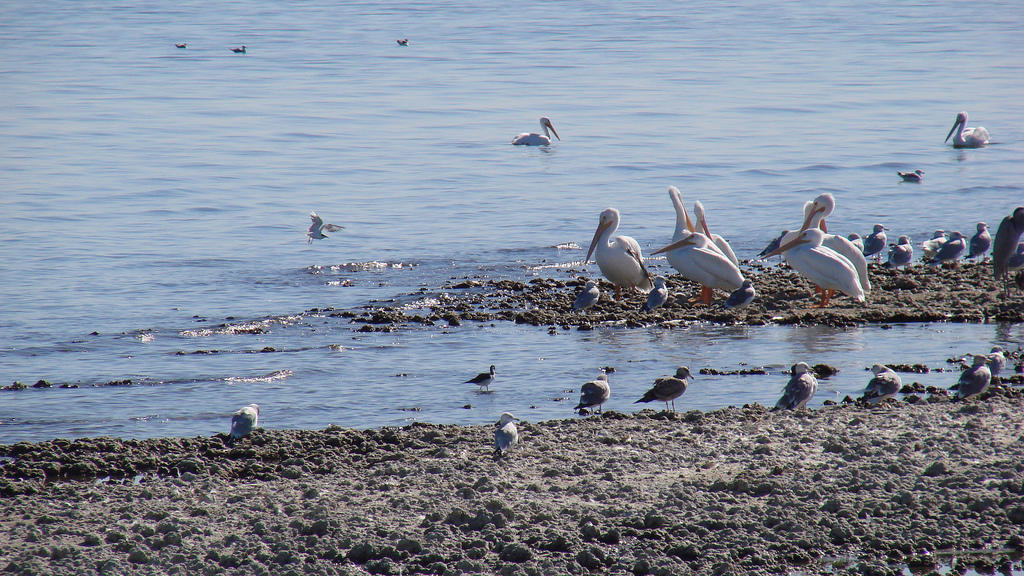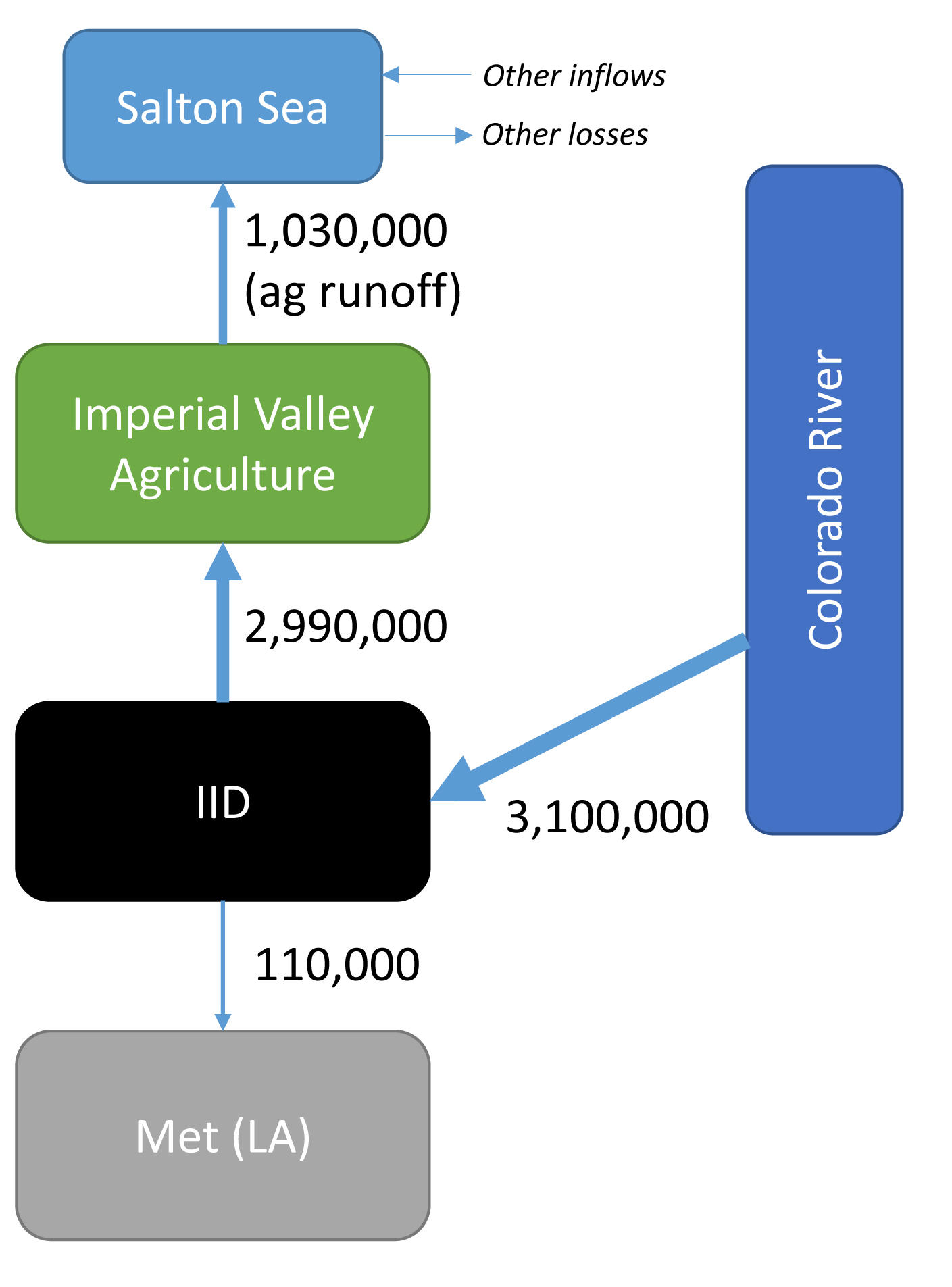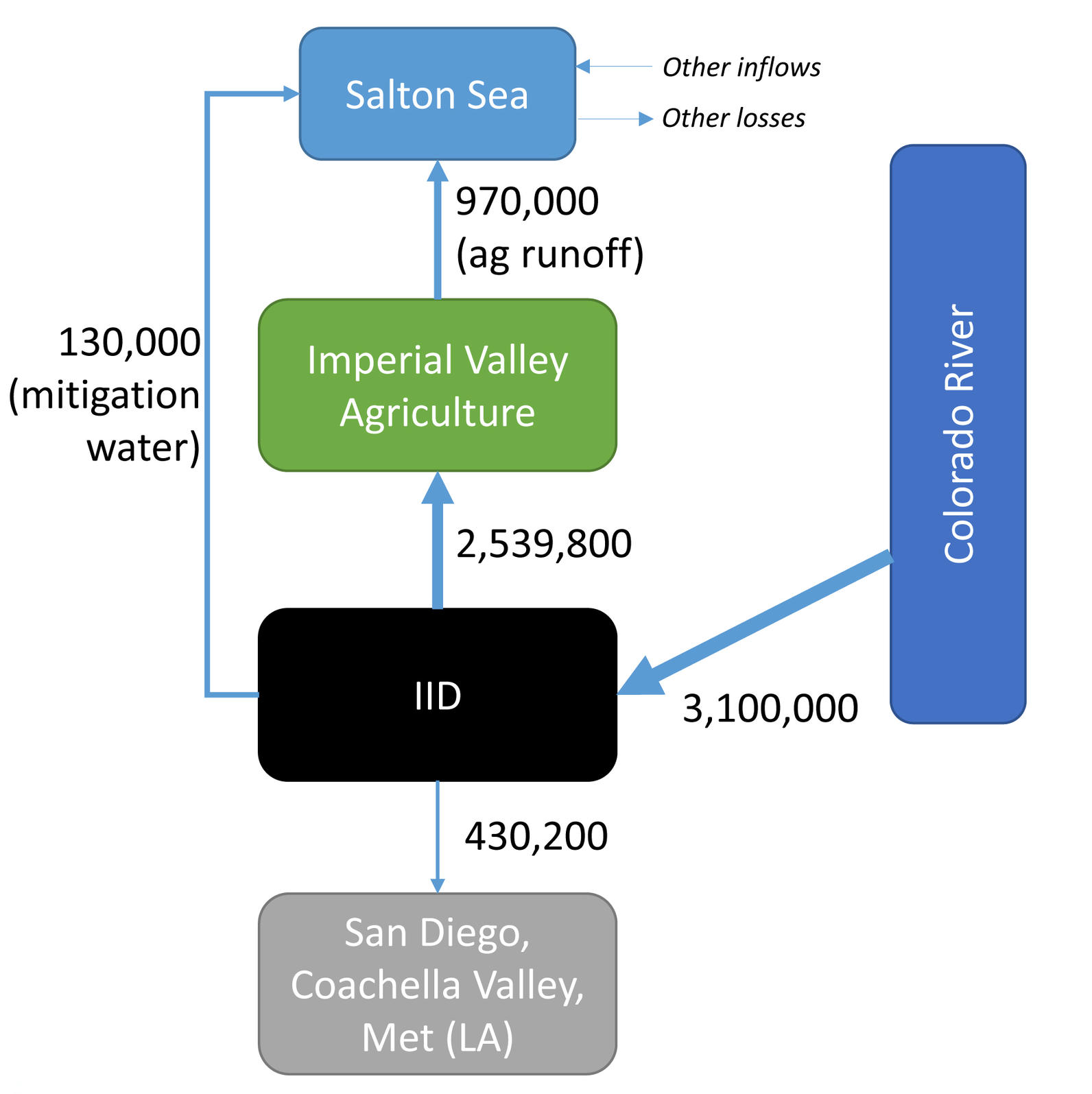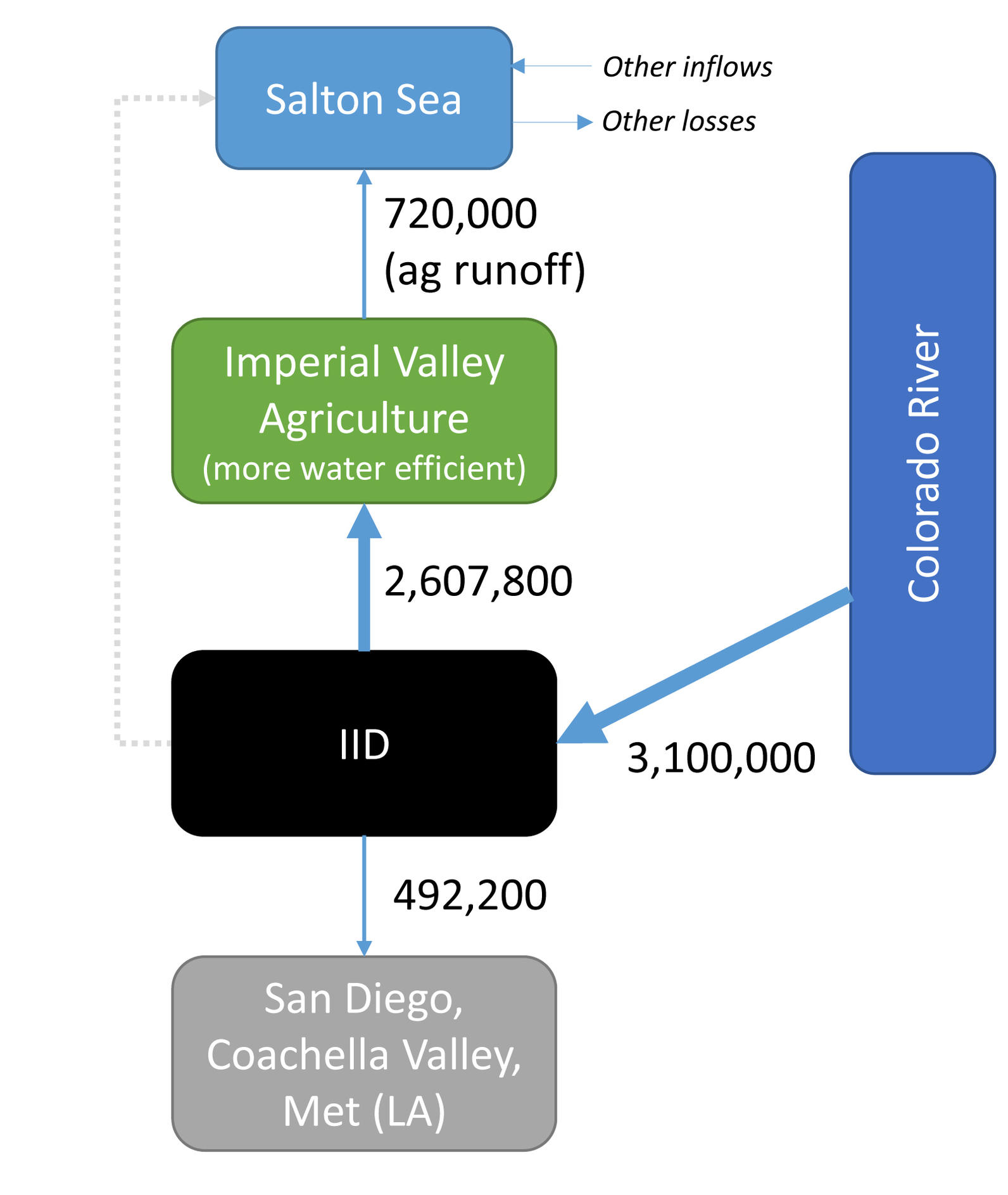
There’s been a great deal of news in the last few years about an impending crisis at the Salton Sea. This crisis is being driven by reductions in water being sent to California’s largest inland lake beginning in 2018. These reductions will expose up to 64,000 acres of the lakebed and result in massive dust storms that could create the worst air pollution crisis in North America. Tens of thousands of acres of crucial bird habitat will disappear if nothing is done.
But what is exactly happening with the water? We’ve created a few simplified graphics that will help explain. We should note that all of the numbers in these graphis are approximations and that smaller inflows and outflows aren't included.
2002: 1,345,000 acre-feet flowing into the Salton Sea

The graphic above shows how the Salton Sea was getting its water back in 2002, with the bulk of its 1,345,000 annual acre-feet coming from the Colorado River by way of the Imperial Irrigation District and then run-off from the agricultural fields of the Imperial Valley. We don’t want to suggest that the Salton Sea was exactly thriving at this point, as drought and toxins in the run-off brought significant challenges. But the relatively stable water levels provided somewhat consistent habitat and superabundant food opportunities for birds. Note that not all the water coming to the Imperial Irrigation District was being sent to farms in 2002. More than 100,000 acre-feet was going to the Los Angeles Metropolitan Water District for consumer use.
Current Salton Sea water flows (2016): 1,100,000 acre-feet

In 2003, the State of California signed an agreement – known as the Quantification Settlement Agreement, or QSA – with four Southern California water districts defining future use of Colorado River water. Under this agreement, the Imperial Irrigation District would send more of its water to municipal water districts, and reduce its deliveries to Imperial Valley farms, which would receive funding to employ water conservation techniques such as drip-irrigation to maintain their production. The prospect of less agricultural run-off water going to the Salton Sea raised the specter of receding waters destroying habitat and exposing more playa dust to the air. To avoid this, the Imperial Irrigation District agreed to send additional fresh water to the Salton Sea through 2017 (this is the mitigation water on the left side of the graphic). The State of California agreed to fund large-scale restoration and infrastructure at the Salton Sea by the end of 2017 to avoid the need for additional water diversions, but for years have failed to get a plan in motion. It is this 2017 deadline that is now compelling the State of California to actively pursue a completed management plan.
Predicted Salton Sea flows in 2035: 720,000 acre-feet

The graphic above shows the end result of the Quantification Settle Agreement, resulting in about 40% less water eventually making it to the Salton Sea. Note the elimination of the mitigation water and the even further reduction in agricultural run-off. A much greater portion of the Imperial Irrigation District water will be going to municipal water districts in Los Angeles, Riverside, and San Diego.
By Garrison Frost
Monthly Giving
Our monthly giving program offers the peace of mind that you’re doing your part every day.




